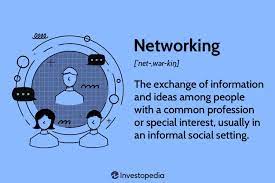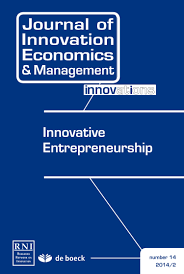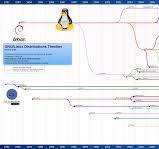Unleashing the Potential of Modern Networks: Connecting Communities and Innovations
The Power of Networks
Networks play a crucial role in our interconnected world, shaping how we communicate, share information, and collaborate. Whether it’s the internet connecting people across continents or local networks linking devices within a home or office, the concept of networks is fundamental to modern society.
At its core, a network is a collection of nodes or points interconnected by communication paths. These nodes can be computers, servers, smartphones, or any device capable of sending and receiving data. The connections between these nodes enable the transfer of information, allowing for seamless communication and data exchange.
Types of Networks
There are various types of networks that serve different purposes:
- Local Area Network (LAN): A LAN connects devices within a limited area such as a home, office, or school. It allows for sharing resources like printers and files among connected devices.
- Wide Area Network (WAN): A WAN spans larger geographical areas and connects multiple LANs. The internet is the largest example of a WAN, enabling global connectivity.
- Wireless Networks: Wireless networks use radio waves to connect devices without physical cables. Wi-Fi networks are common in homes and public spaces.
- Virtual Private Network (VPN): A VPN creates a secure connection over a public network like the internet, allowing users to access resources privately and securely.
The Impact of Networks
Networks have revolutionised how we work, communicate, and access information. They have enabled real-time collaboration among individuals regardless of their physical location. Businesses rely on networks for efficient operations, cloud computing services leverage networks to deliver on-demand resources, and social media platforms connect people worldwide.
In today’s digital age, the power of networks extends beyond mere connectivity. They facilitate innovation by providing platforms for sharing ideas and resources. From online communities to global enterprises, networks have become essential tools for driving progress and fostering connections.
The Future of Networks
As technology continues to evolve rapidly, so do networks. The rise of 5G technology promises faster speeds and lower latency for mobile networks. The Internet of Things (IoT) is expanding network capabilities by connecting everyday objects to the internet.
Innovations such as software-defined networking (SDN) and edge computing are reshaping how networks are designed and managed. These advancements hold the potential to create more efficient, flexible, and secure network infrastructures that can meet the demands of tomorrow’s digital landscape.
8 Essential Tips for Securing and Optimising Your Network
- Ensure your network is secure by using strong passwords and encryption.
- Regularly update your network equipment’s firmware to protect against vulnerabilities.
- Implement access controls to restrict unauthorized users from accessing sensitive data.
- Use virtual private networks (VPNs) for secure remote access to your network.
- Monitor network traffic for any unusual activity that may indicate a security breach.
- Backup your data regularly to prevent loss in case of a network failure or cyber attack.
- Optimize your network performance by managing bandwidth usage and reducing latency.
- Consider implementing redundancy in critical components to ensure high availability of your network.
Ensure your network is secure by using strong passwords and encryption.
To safeguard the integrity and confidentiality of your network, it is essential to implement robust security measures such as utilising strong passwords and encryption. Strong passwords, comprising a mix of alphanumeric characters, symbols, and varying case letters, serve as a crucial line of defence against unauthorised access. Additionally, encryption technology ensures that data transmitted over the network is scrambled and protected from interception by malicious entities. By prioritising security through these practices, you can enhance the resilience of your network and mitigate potential risks associated with cyber threats.
Regularly update your network equipment’s firmware to protect against vulnerabilities.
To safeguard your network against potential security threats, it is crucial to regularly update the firmware of your network equipment. Firmware updates often contain patches and fixes that address vulnerabilities identified by manufacturers or security experts. By staying proactive in keeping your network equipment up-to-date, you enhance its resilience against cyber threats and ensure a more secure and reliable network infrastructure for your operations.
Implement access controls to restrict unauthorized users from accessing sensitive data.
Implementing access controls is a critical aspect of network security to safeguard sensitive data from unauthorised access. By setting up stringent access restrictions, organisations can control who can view, modify, or delete valuable information within the network. This proactive measure not only helps prevent data breaches and cyber threats but also ensures compliance with privacy regulations. Restricting access to authorised users enhances data confidentiality, integrity, and availability, strengthening the overall security posture of the network infrastructure.
Use virtual private networks (VPNs) for secure remote access to your network.
To enhance the security of remote access to your network, consider utilising virtual private networks (VPNs). VPNs create a secure connection over the internet, encrypting data transmission and providing a private tunnel for communication. By using VPNs, you can ensure that remote users can access your network resources securely and protect sensitive information from potential threats or eavesdropping. Implementing VPNs for remote access adds an extra layer of security to your network infrastructure, safeguarding data integrity and confidentiality.
Monitor network traffic for any unusual activity that may indicate a security breach.
Monitoring network traffic is a critical aspect of maintaining the security of a network. By keeping a close eye on data flow, network administrators can detect any abnormal patterns or unusual activities that may signal a potential security breach. Unauthorised access, data exfiltration, or malicious activity can often be identified through anomalies in network traffic. Regular monitoring and analysis of network traffic enable swift detection and response to any security threats, helping to safeguard sensitive information and maintain the integrity of the network infrastructure.
Backup your data regularly to prevent loss in case of a network failure or cyber attack.
It is crucial to regularly back up your data to safeguard against potential loss in the event of a network failure or cyber attack. By creating regular backups of your important files and information, you can ensure that even if your network experiences disruptions or security breaches, you will have a secure copy of your data that can be easily restored. Implementing a robust backup strategy is a proactive measure that can provide peace of mind and protect your valuable data from unforeseen incidents.
Optimize your network performance by managing bandwidth usage and reducing latency.
To enhance your network performance, it is essential to optimise bandwidth usage and minimise latency. By effectively managing the amount of data transmitted across your network and reducing delays in data transfer (latency), you can ensure smoother and more efficient communication between devices. This proactive approach not only improves the overall speed and reliability of your network but also enhances user experience by minimising disruptions and improving response times. Prioritising bandwidth management and latency reduction strategies can significantly boost the productivity and effectiveness of your network infrastructure.
Consider implementing redundancy in critical components to ensure high availability of your network.
Implementing redundancy in critical components is essential for ensuring the high availability of your network. By having backup systems in place, such as duplicate routers, switches, or power supplies, you can mitigate the risk of downtime caused by hardware failures or network disruptions. Redundancy not only enhances the reliability of your network but also provides a safety net in case of unexpected failures, allowing for seamless operations and uninterrupted connectivity for users. Prioritising redundancy in critical components is a proactive measure that can significantly enhance the resilience and performance of your network infrastructure.







